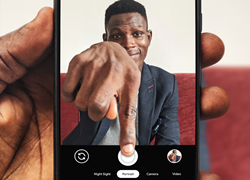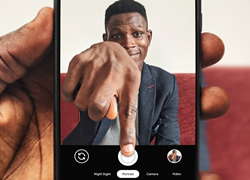
More hospital customers are choosing digital self-service. A promising trend emerging from the COVID-19 crisis
As timely as these digital solutions are in meeting the demands of patients/customers, they also hold the potential to immediately begin saving hospitals and health systems millions in unnecessary, often overlooked expenses – Kevin Fleming, CEO, Loyale Healthcare
LAFAYETTE, Calif. (PRWEB)
June 03, 2020
Because of COVID-19, the nature of the healthcare marketplace in America is changing. What were merely developing trends among patients and payers a few long months ago have quickly become realities. Assumptions about the economics of healthcare delivery have been rendered invalid. The healthcare marketplace emerging from the COVID-19 crisis is more dependent on patient choice, more technology-driven and better able to absorb unpredictable events such as those the crisis continues to throw healthcare’s way.
In research published recently by Forrester, analysts noted that, “Consumers have long awaited a better way to understand where to go for care. The COVID-19 pandemic has further exacerbated this problem on a national stage. Yet self-triage solutions which provide actionable recommendations to users on what to do next are poised to become a mainstay of the digital front door in healthcare.” Their findings go on to point out that as, “organizations optimize these tools, it’s imperative for them to design experiences that reassure consumers, use clear and concise language, and provide seamless and actionable recommendations…”
The “digital front door” this research refers to is healthcare’s equivalent to any other consumer-facing company’s website – more specifically their customer portal. With detailed descriptions of the products and services offered, pricing for those products and services and links to the reviews of other consumers, digital front doors give consumers the information they need to make informed choices about who their healthcare provider will be and how their care will be delivered.
For many of these consumers, financial matters will be nearly as important as medical considerations when choosing a healthcare provider. Even before the pandemic crisis, healthcare provider performance had been negatively impacted by the industry’s growing reliance on patients as a principle source of revenue. With more than one third of industry revenue now coming direct from patients’ pockets, many providers were dealing with the financial consequences of lower patient volumes and higher patient bad debt. With more than forty million now newly unemployed, those consequences are likely to get much worse.
Hospitals and other providers write off billions in patient bad debt each year. Additionally, they risk alienating patients (and their recurring revenue potential) by outsourcing patient debt collection to “early-out” and other vendors whose commitment to patient/customer care may not measure up to patients’ expectations of their healthcare provider. Because providers’ existing revenue cycle systems were built for an age when most provider revenue came from insurers, many institutions lack the systems and know-how to effectively engage with their patients financially. In the new healthcare marketplace, that model must give way to more customer-centric models in order to compete and survive, let alone prosper.
For healthcare, financial sustainability will depend on providers’ ability to step up to their patients’ expectations. Expectations that have evolved rapidly during the COVID-19 crisis. The explosive growth of telehealth resulting from the crisis is an apt example of just how rapid. According to a CNBC article published in April, 2020, “The adoption of telehealth shifted into hyper-drive over the past month, with virtual healthcare interactions on pace to top 1 billion by year’s end.” It goes on to point out that, “Analysts now expect general medical care visits to top 200 million this year, up sharply from their original expectation of 36 million for all of 2020.”
Many other segments of the American economy have been transformed by digital customer engagement – driving additional revenue streams, larger wallet share and meaningful opportunities to extend brands into profitable adjacencies. Healthcare, on the other hand, has been slow to respond to the digital customer/patient engagement revolution. They point to the relatively low engagement experienced on their existing patient portals, concluding that healthcare consumers don’t expect or care to engage with their providers digitally. That conclusion is distorted by the simple fact that many provider portals simply fail to deliver the customer experience patients have grown to expect.
COVID-19 Accelerates the Digital Consumer Engagement Trend
According to survey research recently published by the Alliance of Community Health Plans (ACHP), “The ongoing public health crisis is causing an unprecedented shift in the way Americans view and access healthcare.” These shifts include widespread aversion to in-person visits to a doctor’s office and delays in seeking care – over the last three months and into the future. One bright spot noted in the patient survey results is that 28 percent of respondents have used some type of virtual care in the past three months, nearly tripling previously documented averages. Importantly, 89 percent of these telehealth users were satisfied with the experience.
For decades, healthcare has held itself apart from other consumer industries, assuming that it was immune to the competitive and market pressures that were commonplace in automotive and retail among others. For a long time, that assumption appeared to be sound. But as healthcare’s dependence on patient-directed revenue has soared, so has the impact of patient preference and behavior on healthcare operating performance – from increased patient bad debt to ever-higher revenue cycle costs and a growing susceptibility to pressures from competitors. Some old, some new. Many offering better value and convenience. These include powerful new entrants to healthcare such as CVS Health, Walgreens, Walmart and others.
Again, we believe it is essential for healthcare providers to consider not just their primary solutions – medical care – but all the other patient deliverables associated with the delivery of that care. In that light, for the reasons listed above, patient financial experiences must be included in providers’ digital engagement strategies. This is especially true now during the COVID-19 crisis, as providers face potentially disastrous disruptions in costs and revenue. Why? Because, as timely as these digital solutions are in meeting the demands of patients/customers, they also hold the potential to immediately begin saving hospitals and health systems millions in unnecessary, often overlooked expenses.
Our company, Loyale Healthcare, routinely analyzes healthcare provider revenue cycle performance to calculate potential savings for companies that convert to digital patient financial engagement. These companies consistently show cost take-outs in the tens of millions per year. These are savings that begin to accumulate in as little as 90-days following adoption. Better still, digital revenue cycle systems give providers the flexibility and scale they’ll need as more ordinary operations begin to ramp up. Longer-term, digital patient financial engagement gives providers an enduring competitive advantage with the adaptability to conform to evolving patient expectations.
Under the formidable threat of COVID-19, the American healthcare industry has demonstrated an astonishing capacity for innovation. Embracing new ideas, leveraging technology and working tirelessly at breakneck pace – health systems, hospitals and the caregivers they employ have been a highlight in a troubling time. It’s time to extend the lessons learned from these experiments into the next phase – making the most of what healthcare has learned to improve every dimension of the patient’s healthcare experience – today and ten years into the future.
Kevin Fleming is the CEO of Loyale Healthcare.
About Loyale
Loyale Patient Financial Manager™ is a comprehensive patient financial engagement technology platform leveraging a suite of configurable solution components including predictive analytics, intelligent workflows, multiple patient financing vehicles, communications, payments, digital front doors and other key capabilities.
Loyale Healthcare is committed to a mission of turning patient responsibility into lasting loyalty for its healthcare provider customers. Based in Lafayette, California, Loyale and its leadership team bring 27 years of expertise delivering leading financial engagement solutions for complex business environments. Loyale currently serves approximately 12,000 healthcare providers across 48 states. Loyale is proud to have an enterprise-level strategic partnership with Parallon which includes the deployment of Loyale’s industry leading technology at all HCA hospitals and Physician Groups.

